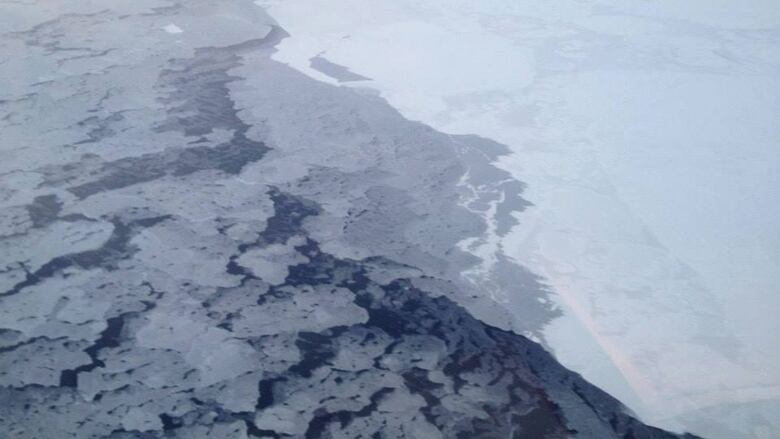Melting Arctic ice changing weather patterns, scientists say
This winter's sea ice peak earliest on record, U.S. satellite data show

Scientists are warning of an increasing environmental chain reaction as the melting of Arctic ice hits a new record this year.
This winter, the ice at the top of the northern hemisphere reached its peak thickness near the end of February, weeks ahead of normal.
"The peak was Feb. 25, the normal peak is mid-March," said Jeff Key who specializes in satellite research with the National Oceanographic and Atmospheric Association (NOAA).
It was also the smallest extent of winter ice ever recorded in satellite records, Key told reporters at a U.S. State Department briefing in Washington, D.C. Tuesday. Tuesday's briefing confirmed initial findings released in March.
"We had less ice this winter in the Arctic than any other winter during the satellite era," said Key.
He said that most dramatic swings in winter ice are occurring the Beaufort Sea, which stretches from Canada's northwest coast to Russia.
"The Beaufort sea has seen tremendous changes over the last few years from one year to the next, and very opposite swings, which we are trying to explain," Key told reporters.
Dramatic changes
The size of Arctic winter ice cover has been declining since about 2002. It rebounded in 2013 only to decrease again this year. Scientists aren't sure why there are such dramatic swings, but they do know for certain the overall trend is downward.
They warn the effects are already being felt in concrete ways.
As ice melts the open water is absorbing more heat. That makes it harder for Arctic cod to survive. The cod thrive on cold water at about 3C. The fish feeds the seals that feed polar bears.
But scientists predict by the end of the century, Arctic sea temperatures could rise to 10C to 13C, dramatically affecting that crucial food chain.
"Warm water is not good for cod and that will have real consequences for other marine mammals," said Dr. Ed Farley with NOAA's Alaska Fisheries Science Center. Farley points out scientists are already seeing polar bears hunting for other types of food.
"More polar bears, because of loss of sea ice, are resorting to more land-based food and that land-based food has been determined as more junk food. It's not as high in fat content as their normal prey [seals] are," Farley told reporters.
Changing jet stream affects weather
The effects are also being felt in cities across North America that are being hit by more extreme weather events linked to a changing climate.
Key told reporters the warming Arctic may be weakening the polar jet stream, the air currents that flow over North America, Europe and Asia.
"What happens in the Arctic doesn't stay in the Arctic," he said.
The jet stream relies on the difference between cold and warm temperatures to keep it moving quickly around the world.
But scientists believe that as the Arctic warms that crucial contrast in temperature is disappearing causing the jet stream to slow down.
That causes weather patterns to get stuck for longer periods of time, such as occurred during the record winter cold in Eastern North American this year or the ongoing drought in California.
"The less sea ice is certainly going to change weather patterns," said Key. "It's going to be a different world out there I think in 20, 30, 40 years."
Earlier this month, ministers from eight polar nations agreed climate change is an urgent priority.
U.S. Secretary of State John Kerry assumed chairmanship of the Arctic Council taking over from Leona Aglukkaq, Canada's environment minister.
"The Arctic is warming faster than anywhere else on earth," Kerry told the conference in Iqaluit, Nunavut.
The U.S. government has put battling climate change and protecting Arctic seas on the top of its list during the next two years as chair of the council.













_(720p).jpg)


 OFFICIAL HD MUSIC VIDEO.jpg)
.jpg)



























































































